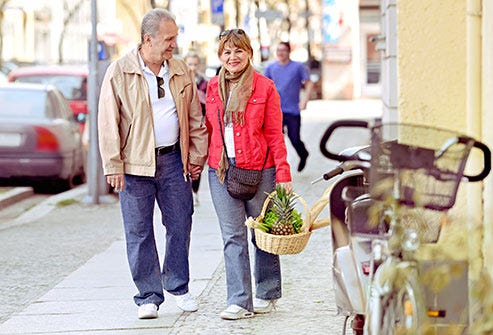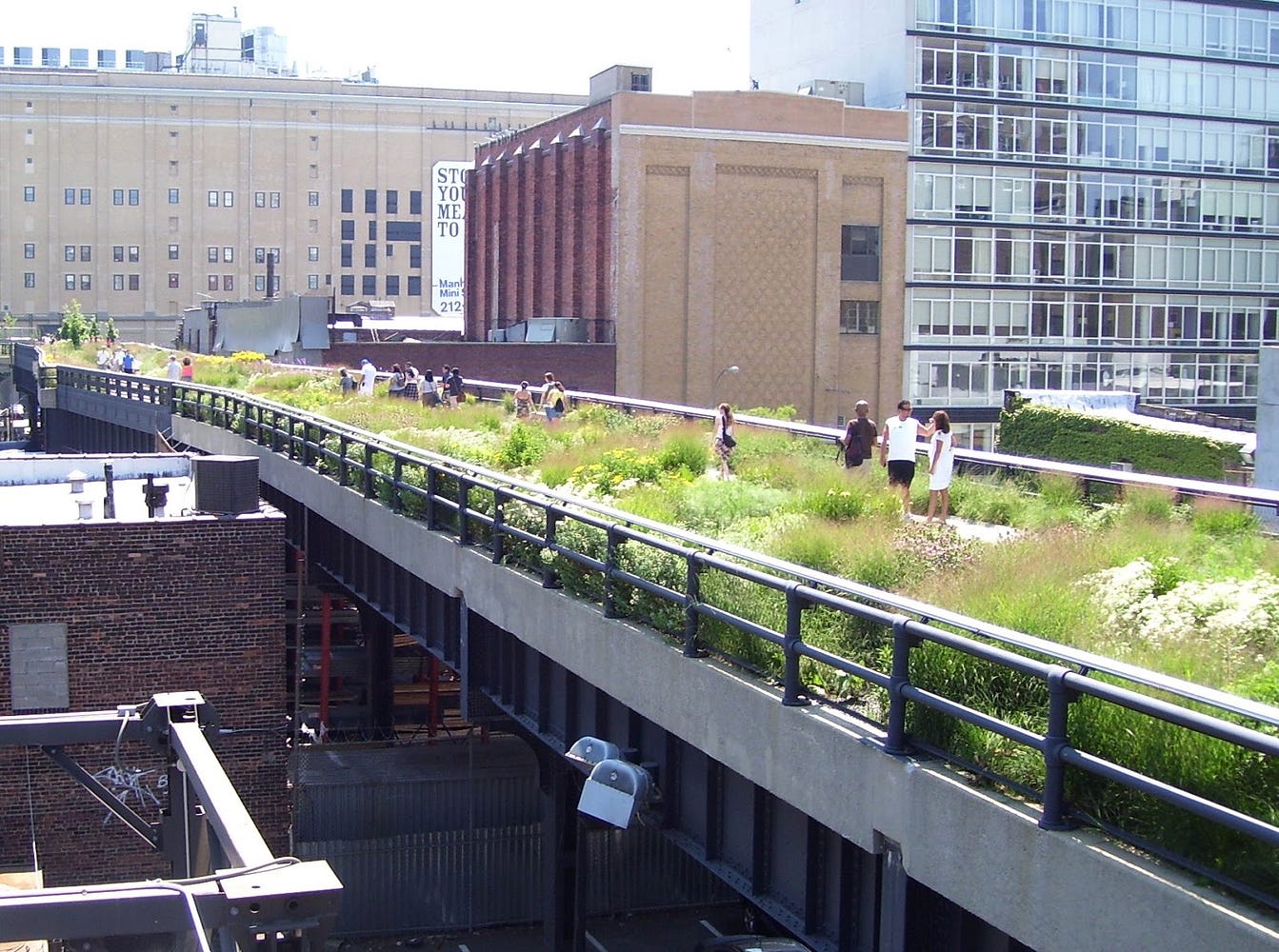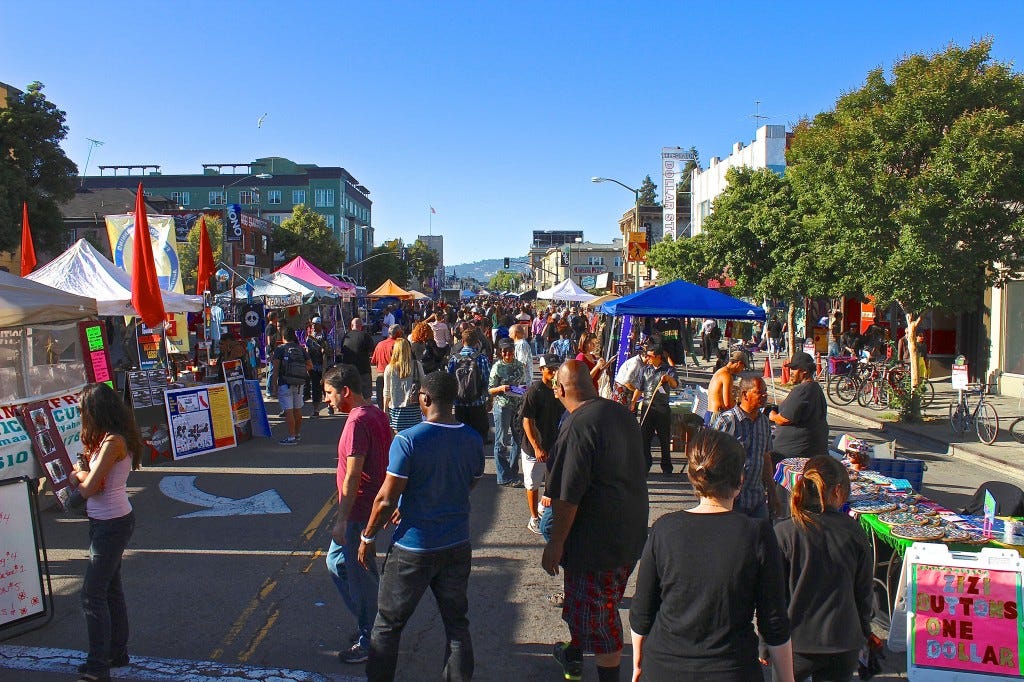By Michelle Lieberman, Molly O’Reilly and Katharine Bierce
Our nation’s top doctor says: we need to walk more! And to support walking, we need to design infrastructure to encourage the individual behaviors and social interactions that make walking fun, safe, and easy. To mobilize this change, the U.S. Surgeon General will soon be announcing a Call to Action on walking.
What are some resources to implement the Surgeon General’s call at the local and national level? How can we mobilize many groups to be a part of this movement?
We discussed this topic on April 17, 2015 in a small group at an event hosted by MaestroConference/VoiceVoice, with support from Kaiser Permanente, America Walks and many other active transportation organizations. The following is a summary of what some participants discussed.

Incentives for Individual Behavior Change
One way to get people to walk more is to look at walking as a behavior which can be measured, incentivized, and even “gamified.” Employers already incentivize carpooling, cycling and using public transit, which are easy to track. How can employers track and incentivize walking?
One approach is to use wearable technology like pedometers in FitBit or Jawbone electronic bracelets, the Basis watch, smartphone apps or other “quantified self” tools to measure individuals’ walking.
Technology can be combined with incentives like rewards for employees who meet walking goals. For example: company T-shirts for an employee walking competition, free sneakers from a shoe company for 90 days of hitting 10,000 steps a day, or a sweatshirt for completing a “couch to 5K” program. We imagine that corporate sponsors like Nike, Adidas, Under Armour and others might be interested — and we hope they’ll see the Surgeon General’s upcoming announcement as a potential win-win opportunity for expanding their marketing while helping improve public health.
Individuals are motivated to change behaviors when they want to achieve goals like losing weight, and walking more is a great way to do that. We envision the Surgeon General and CDC partnering with established organizations like Weight Watchers, as well as newer startups that help people achieve their goals like www.stickk.com.
Cross-Functional Health Collaborations
Since walking has obvious health benefits, doctors and nurses are a natural community to engage in getting people to walk more. But how can we enlist the help of very busy medical professionals to engage around #EveryBodyWalk and become advocates themselves, when they have long hours at work?
We imagine supporting their efforts through a potential cross-functional collaboration with design school students working with local walking advocacy organizations to design clearer, more actionable, and more relevant materials. What if it were as easy to find a group to walk with or a safe walking route as it is to find a restaurant review on Yelp? We envision a national movement of cross-functional collaboration for health where doctors could give patients an overview of resources in their community — making walking the easy choice. This kind of flyer would include local maps and info on how to make choosing to walk easy and fun.

Social Support
People walk for fun. Unlike driving alone on errands or to work, the social aspect of walking is something that walking advocacy organizations can promote. For example, a “Walk to Work Day” — similar to Bike to Work Day in San Francisco — can be an event that engages communities around walking.
Parks and Recreation departments and groups like the Sierra Club and Rails to Trails can also organize group walks or hikes to bring people together. Outdoor equipment companies like REI and Sports Basement also run similar events.
Let’s not forget the faith community — houses of worship such as churches, synagogues, and mosques could put together a “walk to services” movement to build more community solidarity, perhaps in partnership with the county health department.

Concrete Improvements with Modern Science
Improving walkability needs to include people who have control over the built environment: architects and landscape architects, real estate developers, realtors, transportation planners. Improving wayfinding through signage that indicates how long it takes to walk somewhere, with landmarks and time estimates, can help pedestrians, too.
From this partnership we envision concrete improvements to the built environment that incorporate insights from “habit design,” a new field outlined in the book Nudge, by behavioral economists Richard Thaler and Cass Sunstein. In summary, making desired behaviors happen is easier when the environment supports that behavior. When the infrastructure of our neighborhoods supports walking, like designing low speed streets with wide sidewalks, making sure that crosswalks are re-painted as needed and that there are crossing lights/countdown lights, etc. — it becomes easier to choose to walk.
PR & Media

Monty Python’s “Ministry of Silly Walks” sketch:https://www.youtube.com/watch?v=iV2ViNJFZC8
How can we make walking cool? We think that celebrity endorsements or a national song or video contest could help raise awareness.
As much as we’d like to think that everyone reads everything the Surgeon General is to say, the reality is that people are probably more inclined towatch funny videos.

Source: Oakland Art Enthusiast,http://oaklandartenthusiast.com/2013/06/20/june-art-murmur-first-friday/
Keeping the Momentum Going
Unfortunately, press releases don’t always inspire action. How can we move beyond one-time announcements to ensure a sustained effort around walking and walkability? We envision active transportation nonprofits working with local media and reporters to bring the national call to action down to the local level. By covering the Surgeon General’s Call to Action as national story with local news that’s relevant, people can get a better idea of the benefits of walking. For example, communities can come together to host fun monthly events to close streets and host events like Sunday Streets in San Francisco or the art-oriented First Fridays in Oakland, CA. While this takes some work to coordinate with local government or aldermen to allow street closures that affect cars and buses, we think it’s worthwhile to make it a fun occasion to walk — and support local businesses.

What else can we do to get people to walk more and improve the walkability of our communities? And, how can you participate? Please respond in the comments! Or tweet about this: #SGWalks #EveryBodyWalk@Surgeon_General.
